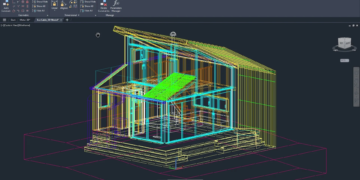As businesses increasingly rely on digital document management, Optical Character Recognition (OCR) technology has become essential for automating the extraction of data from scanned documents, images, and PDFs. With a range of OCR tools available, selecting the best optical character recognition software for your business can be a daunting task. To ensure you make an informed decision, it’s important to compare OCR tools based on a comprehensive framework that evaluates their capabilities, features, and suitability for your specific needs.
This article provides a structured framework for comparing OCR tools, allowing businesses to identify the solution that best fits their document processing workflows.
1. Accuracy and Precision of Text Recognition
The core function of any OCR tool is its ability to accurately recognize and extract text from images or scanned documents. Accuracy is essential in ensuring that the data extracted is usable without requiring manual correction.
- Text Recognition Performance: The best optical character recognition software should be able to process text with minimal errors, even in low-quality documents or those with complex layouts. Look for tools that can recognize diverse fonts, handwriting, and distorted text.
- Accuracy with Non-Standard Fonts: Some OCR tools perform better with non-standard fonts or languages that might be used in specialized documents, such as technical reports or legal contracts. Accuracy in such cases can be critical for industries where precision matters.
2. Support for Different Document Formats
OCR tools should be able to handle various document formats, ensuring they can be applied to the full range of documents your business handles. The more flexible the tool, the easier it is to adapt to evolving business needs.
- File Type Compatibility: The best OCR software supports a wide variety of document formats, including PDFs, JPEGs, TIFFs, and PNG images. It should be capable of extracting data from both scanned documents and digital PDFs.
- Complex Documents Handling: OCR tools that can process complex documents with a combination of text, tables, and images are especially valuable. For example, legal documents, invoices, and financial reports often include mixed content, and the OCR tool should be able to extract both structured and unstructured data accurately.
3. Processing Speed and Throughput
In business environments where large volumes of documents are processed daily, speed becomes a critical factor. OCR tools that offer quick processing without compromising accuracy can significantly improve operational efficiency.
- Batch Processing: When comparing OCR software, it’s essential to look for solutions that offer batch processing capabilities. Businesses that need to handle thousands of documents at once will benefit from tools that can process documents in bulk with minimal manual intervention.
- Real-Time Processing: For industries that require immediate action, such as insurance or financial services, real-time OCR processing can speed up document workflows and enhance productivity.
4. Integration with Existing Systems
An OCR tool is most effective when it integrates well with other enterprise systems like ERP (Enterprise Resource Planning), CRM (Customer Relationship Management), and document management platforms. Smooth integration ensures that the data extracted by the OCR tool flows seamlessly into other systems for further processing, analysis, or archiving.
- API Support: The best optical character recognition software offers robust API capabilities to enable seamless integration with your existing software ecosystem.
- Cloud and On-Premise Solutions: Depending on your company’s infrastructure, you may need either cloud-based or on-premise OCR tools. Look for software that provides both options, offering flexibility for businesses of all sizes.
5. Language Support
For businesses operating internationally or working with documents in multiple languages, language support is an important feature to consider. High-performing OCR tools should support multiple languages to accommodate the diverse needs of businesses.
- Multi-Language Recognition: The best OCR software supports a wide range of languages, from widely spoken ones like English, Spanish, and Chinese, to more niche languages. Ensure that the software supports the languages you frequently encounter in your documents.
- Automatic Language Detection: Advanced OCR tools can automatically detect the language of the document and adapt accordingly, improving efficiency and reducing errors.
6. Customization and Template Support
Different industries have unique requirements when it comes to data extraction. For instance, legal professionals might need to extract clauses and dates from contracts, while finance teams may need to focus on invoice numbers and transaction details. The ability to customize the OCR tool for specific use cases is essential.
- Customizable Templates: The best optical character recognition software should allow users to create templates tailored to specific document types. For example, custom templates can be created for invoices, contracts, or medical records to automatically capture the necessary fields.
- Flexible Data Extraction Rules: OCR tools that allow you to define specific rules for data extraction, such as setting the order of extracted fields or customizing the data types to be captured, provide better control over the process.
7. Security and Compliance
Given the sensitive nature of documents in industries like finance, healthcare, and legal, security and compliance features are critical when choosing OCR software. The best OCR tools should ensure that extracted data is handled securely and in accordance with industry regulations.
- Data Encryption: Look for OCR solutions that provide encryption features for both the extraction and storage of sensitive data.
- Regulatory Compliance: Ensure the software complies with industry standards like HIPAA (for healthcare), GDPR (for data privacy), and SOC 2 (for financial services). Compliance with these standards ensures that your business stays within legal and regulatory requirements.
8. User Interface and Ease of Use
A simple, intuitive interface is crucial for ensuring that your team can easily adopt and utilize the OCR tool. A complex or clunky interface can slow down adoption and reduce the effectiveness of the software.
- User-Friendly Design: The best OCR tools should have an intuitive, easy-to-navigate interface that requires minimal training. Look for solutions that provide drag-and-drop functionality for document upload, straightforward setup processes, and clearly labeled features.
- Automation Features: Some OCR tools come with built-in automation features that can trigger actions based on certain conditions. For example, once a document is scanned, it could be automatically categorized and sent to the relevant department for processing.
9. Cost-Effectiveness
Cost is an important factor to consider when selecting an OCR tool. Businesses should look for software that provides value for money and supports long-term growth. Consider both the upfront costs and the total cost of ownership, including any hidden fees for additional features or integrations.
- Flexible Pricing Models: The best OCR software offers scalable pricing plans that fit your budget, whether it’s a pay-per-use model or a subscription-based pricing structure.
- Return on Investment (ROI): A quality OCR tool should provide a clear ROI by improving document processing efficiency, reducing errors, and automating manual tasks.
10. Customer Support and Maintenance
Customer support and ongoing maintenance are essential to ensuring that your OCR tool continues to meet your needs over time. The best OCR tools offer excellent customer service and regular software updates to address emerging business requirements and security concerns.
- 24/7 Support: Choose OCR software that provides around-the-clock support to address any issues promptly.
- Regular Updates: The best tools offer regular updates and feature enhancements to keep up with changes in document formats and user requirements.
Final Thoughts
Selecting the best optical character recognition software for your business is crucial for automating document processing and improving overall efficiency. By evaluating OCR tools based on factors like accuracy, speed, security, customization, and integration, you can ensure that the solution you choose will meet your business needs both now and in the future.
Each business has unique requirements when it comes to document processing, and by using this framework, you can confidently identify the OCR tool that will provide the most value to your organization.













